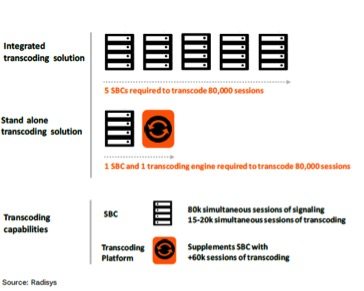As carriers continue to roll out VoLTE, VoWi-Fi and WebRTC solutions on their path to 5G, adjunct transcoding is seen as a solution for interoperability.
Editor’s Note: In an attempt to broaden our interaction with our readers we have created this Reader Forum for those with something meaningful to say to the wireless industry. We want to keep this as open as possible, but we maintain some editorial control to keep it free of commercials or attacks. Please send along submissions for this section to our editors at: dmeyer@rcrwireless.com.
In December 2015, RCR Wireless News Editor-in-Chief Dan Meyer wrote on how “VoLTE and VoWi-Fi Remain 2016 Wild Cards.” Meyer commented that while a number of top-tier mobile operators have launched voice-over-LTE services already, there are still technical challenges that remain significant hurdles to broader VoLTE and voice-over-Wi-Fi deployments. For VoLTE, interconnection between operator networks is seen as a challenge, whereas for VoWi-Fi the hurdle revolves around seamless handoffs between a cellular and Wi-Fi connection.
Another challenge is that each of these new services has also introduced new audio and video codecs, delivering ongoing improvements in voice and video quality. This growing number of codecs has led to growing complexity, such that mobile operators must be able to support the newest codec technologies for the newest handset models yet maintain compatibility with the codecs in order to ensure that new handset models will interwork with legacy devices and with other operators’ networks that are at different stages of evolution.
Maintaining this interoperability across different generations of mobile equipment requires transcoding of the media interconnection somewhere in the network to ensure a VoLTE device can communicate with a 3G handset, or web real-time communications endpoints can connect to session initiated protocol endpoints. Transcoding is the process of decoding an incoming audio or video signal that has been encoded with one type of codec and then re-encoding the signal into a different codec before sending it on. This transcoding needs to be done in real time to minimize any delay in video or call quality.
Transcoding isn’t new, but traditional integrated transcoding solutions are limited. In a legacy network, media gateways and session border controllers performed network transcoding functions. However, these legacy network elements are not designed or intended to support high-definition audio and video transcoding services. When new codecs are introduced such as enhanced voice services or Opus, mobile operators often need to perform expensive and time consuming forklift upgrades for their networks. Hence, it is time to seriously consider a new approach to transcoding – one that delivers better economics with increased flexibility to future proof mobile operators’ network, while preserving past investments in SBCs and media gateway platforms.
Adjunct transcoding allows mobile operators to deploy transcoding processing functions on separate, standalone processing platforms that interwork with existing legacy SBC and gateway equipment. There are several benefits to an adjunct transcoding architecture and approach.
Allows transcoding to scale independently from the signaling functions
Mobile operators can update transcoding resources to support new codecs as required, without having to update their entire network.
Enables transcoding functions to be implemented in optimal locations
By separating the transcoding from the signaling and control planes, mobile operators can centralize the signaling functions in core data centers, while keeping the transcoding functions distributed to minimize end-to-end delays.
Extends the life of mobile operators’ existing SBC investments and future proofs the network
By separating transcoding processing into standalone platforms, SBCs can continue to do what they do best, namely signaling and border control functions. Modern adjunct transcoding platforms can complement these SBCs by delivering economical scalable transcoding for complex HD audio and video codecs.
Provides the best balance of cost, efficiency and performance
For example, a mobile operator would need to deploy five SBCs to transcode 80,000 HD audio calls when the transcoding function is integrated in the network. A mobile operator could also transcode those same 80,000 sessions with just one SBC and one transcoding resource function.

Mobile operators can deploy standalone transcoding functions either in virtualized software or purpose-built hardware. A virtualized approach makes sense when transcoding volumes are low in relation to the overall network costs. However, when media processing volume increases in the network, it can become cost prohibitive to continue to assign general processor capacity for virtualized transcoding. As a result, dedicated transcoding at scale may be better achieved using dedicated hardware platforms that use digital signal processing chips that are optimized to efficiently deliver transcoding.
The combination of mobile operators roll out of LTE networks and shift to “5G” networks; the deployment of new services such as VoLTE, VoWi-Fi, WebRTC, and video over LTE; along with the growing complexity and continued evolution of HD audio and video codecs is causing mobile operators to rethink how they need to ensure seamless connectivity between devices and networks. Now is the time for mobile operators to consider an adjunct transcoding approach to future proof their networks and economically deploy transcoding functionality for next-generation services without having to upgrade their entire network.

